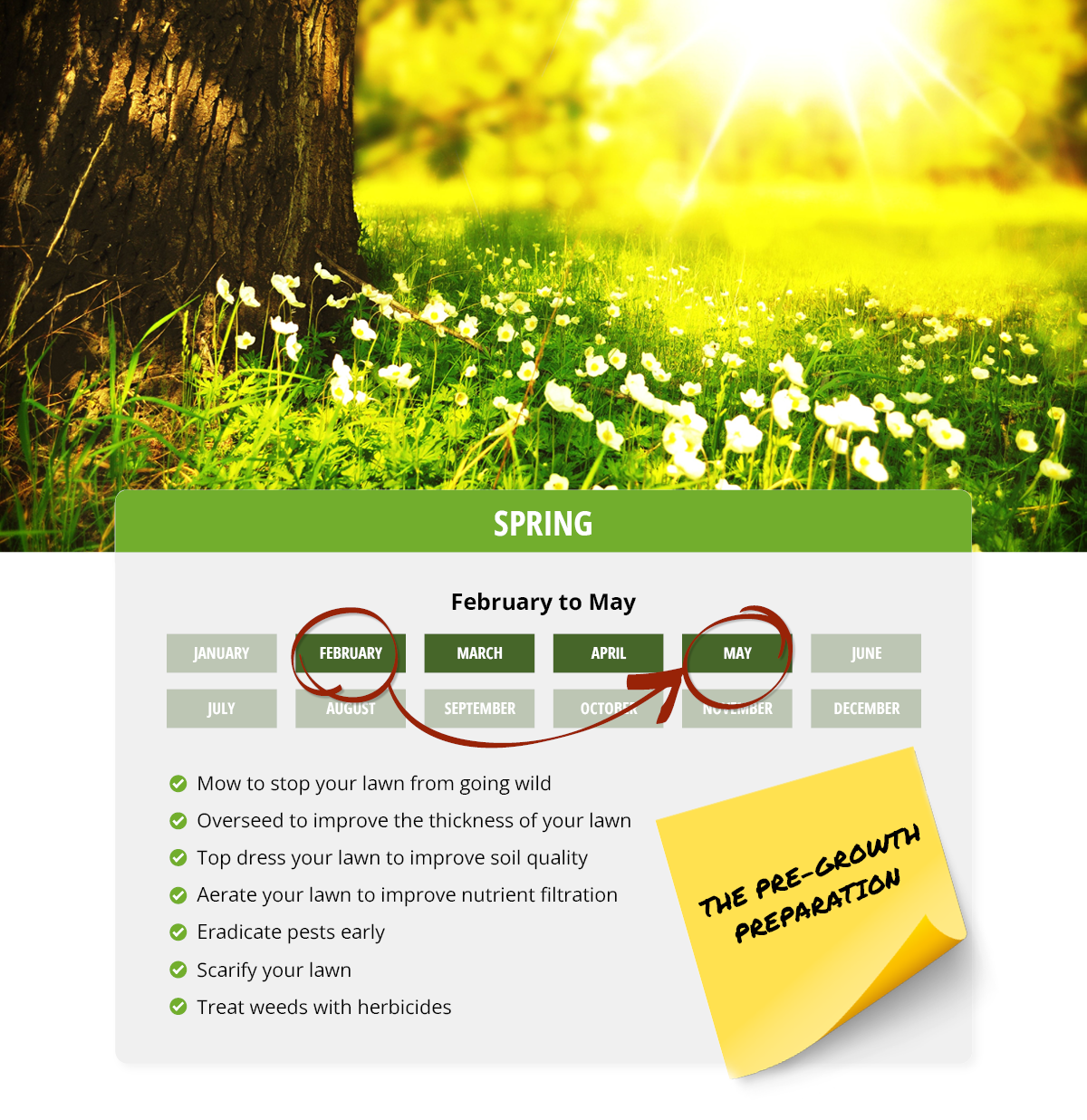As autumn arrives with cooler air, falling leaves, and shorter daylight hours, many homeowners find it challenging to keep their lawns looking lush and green. By October, grass enters a phase of dormancy or slows its growth, depending on your local climate and the type of grass you have. However, with attentive care, your lawn can stay vibrant, hardy, and visually appealing throughout the fall months. This guide offers practical, research-backed advice on maintaining a green lawn during October. From optimal mowing methods to fall fertilization and watering strategies, these tips will help you preserve your turf’s beauty well into the cooler season.
- Identify Your Grass Variety
The foundation of effective lawn care in fall is knowing whether your grass is a cool-season or warm-season type, as each reacts differently to autumn conditions.
- Cool-season grasses (such as Kentucky bluegrass, perennial ryegrass, and tall fescue) flourish in cooler temperatures and typically experience peak growth in spring and fall. With proper maintenance, they can remain green through October and sometimes longer in milder climates.
- Warm-season grasses (including Bermuda, zoysia, centipede, and St. Augustine) begin to slow growth and turn brown as soil temperatures drop. To extend their green period, overseeding with cool-season grasses might be necessary.
Understanding your grass type allows you to customize care routines for optimal color and health.
- Modify Mowing Habits for Fall
Although grass growth slows in October compared to summer, mowing remains essential. Consider these guidelines:
- Gradually lower your mowing height by about half an inch early in the fall to allow more sunlight to reach the grass crown, strengthen root systems, and reduce the risk of snow mold in colder areas. Avoid cutting too short, which can weaken the grass.
- Adhere to the one-third rule by never trimming more than one-third of the blade length at a time to minimize stress on the turf.
- Keep mower blades sharp to prevent tearing the grass, which can cause brown tips and increase vulnerability to diseases.
Regular mowing encourages thicker growth, resulting in a greener, healthier lawn throughout October.
- Time Your Fertilization Correctly
Applying fertilizer in the fall is often the most crucial feeding of the year, replenishing nutrients depleted during summer stress and promoting robust root growth.
- For cool-season grasses, apply a balanced or nitrogen-rich fertilizer in early to mid-October to support active growth, enhance color, and prepare the lawn for winter.
- For warm-season grasses, fertilize in early fall before growth significantly slows, choosing fertilizers lower in nitrogen and higher in potassium to boost cold tolerance.
Pro tip: Use slow-release nitrogen fertilizers to provide steady nourishment without risking burn or excessive top growth.
- Water Thoroughly and Wisely
Even though cooler temperatures reduce evaporation, watering remains important in October. Grass still requires about 1 to 1.5 inches of water per week to stay healthy and resilient as it transitions into dormancy.
Maintain about 5 inches of water weekly, focusing especially on cool-season grasses that continue growing actively during this period. Water early in the day to minimize the risk of disease. Opt for deep, less frequent watering sessions to promote robust root development, which is crucial for preserving a vibrant green lawn. Leverage natural rainfall by adjusting your irrigation routine in wetter regions. Consistent soil moisture helps your lawn stay lush and green longer, preventing the dull, patchy appearance caused by drought stress.
As October arrives, you might notice thinning or bare spots from summer wear. Fall overseeding is the perfect solution to fill these gaps and keep your lawn uniformly green. Select a premium cool-season grass seed, such as ryegrass, which germinates rapidly and provides quick green coverage. Prepare the soil by raking to expose it, then spread the seed evenly, lightly cover with compost or soil, and maintain regular watering until the seeds sprout. For warm-season lawns, overseeding with ryegrass ensures green coverage through October and winter when the main grass starts to fade.
Compacted soil can block water, nutrients, and oxygen from reaching roots. October is an ideal time to perform core aeration on cool-season lawns. Aeration benefits include:
- Encouraging deeper root growth
- Enhancing fertilizer and water absorption
- Reducing thatch accumulation
- Boosting overall lawn vibrancy
In warmer climates, aeration might be better done in late summer, but cool-season grasses thrive when aerated in October.
Weeds compete with your grass for nutrients and create an uneven, patchy look. Fall is an excellent time to apply herbicides because weeds are actively storing energy in their roots. Use a selective broadleaf herbicide to target weeds like dandelions, clover, and chickweed. Apply on a mild day with no rain forecast for at least 24 hours. For a natural approach, hand-pulling weeds after rainfall is very effective. Tackling weeds in October helps maintain a consistent, green lawn free of unsightly patches.
While autumn leaves add beautiful color to your landscape, leaving them piled on your lawn can cause problems. Thick layers of leaves block sunlight, reduce airflow, and trap moisture, which encourages fungal diseases. Accumulated leaves smother grass, leading to thinning and browning. Regularly rake or use a mulching mower to keep grass exposed and photosynthesizing. Mulched leaves also enrich the soil by adding organic matter, promoting long-term lawn health.
A thatch layer thicker than half an inch can prevent water and nutrients from reaching the roots. If your lawn feels spongy underfoot, dethatching might be necessary. For smaller areas, a manual dethatching rake works well. Larger lawns or heavier thatch buildup may require power raking or verticutting to restore lawn health.
Lawn Care Tips for October

Dethatching in Early October
For cool-season grasses, removing thatch in early October allows the lawn to bounce back before winter arrives, helping it stay lush and vibrant.
Nourish Your Soil with Compost
Applying a thin ¼-inch layer of compost during October enhances soil texture, stimulates beneficial microbial life, and improves moisture retention. This natural topdressing supplies a steady nutrient flow, promoting greener grass without heavy reliance on chemical fertilizers.
Guard Against Frost Damage
In colder climates, frost often appears by late October. While frost itself doesn’t kill grass, walking on frozen blades can crush them, causing brown, brittle patches. Avoid foot traffic on frosted lawns and keep grass trimmed to prevent tall blades from bending and breaking easily. With proper care, your lawn can stay green and healthy despite frost.
Adapting to Your Regional Climate
Maintaining a green lawn in October varies by location:
- Northern areas: Emphasize fertilizing, overseeding, and aeration to encourage strong fall growth of cool-season grasses.
- Southern areas: Prepare warm-season lawns for winter by overseeding with ryegrass and applying potassium-rich fertilizers.
- Transitional zones: Use a combination of these methods based on your dominant grass type and local weather patterns.
Common Pitfalls to Avoid
Many lawns lose their color prematurely in October due to avoidable mistakes:
- Skipping fall fertilization weakens roots.
- Overwatering encourages shallow roots and fungal issues.
- Cutting grass too short stresses the turf and increases cold damage risk.
- Leaving leaf piles smothers grass and kills patches.
Avoiding these errors helps your lawn retain its rich green hue longer.
Final Thoughts
Achieving a vibrant, healthy lawn in October requires timely care, knowledge, and consistency. By adjusting mowing habits, feeding wisely, watering appropriately, and managing weeds, thatch, and bare spots, you can keep your lawn thriving through fall. Whether you’re nurturing cool-season grasses or transitioning warm-season lawns, these strategies will help your yard stay a source of pride until winter dormancy. A little extra effort now sets the stage for a quicker, greener spring revival.
- Seasonal Lawn Challenges: Grass growth slows or enters dormancy in October; proper care keeps lawns vibrant.
- Know Your Grass Type: Cool-season grasses thrive in fall; warm-season grasses slow down and may need overseeding.
- Mowing Adjustments: Lower mowing height slightly, follow the one-third blade rule, and keep blades sharp.
- Fall Fertilization: Apply nitrogen-rich fertilizer for cool-season grasses; use potassium-rich fertilizer for warm-season lawns.
- Watering Tips: Water deeply and infrequently, about 1–1.5 inches weekly, preferably in the morning.
- Overseeding: Fill bare spots with cool-season grass seed, especially ryegrass for quick greening.
- Aeration Benefits: Aerate compacted soil to improve root growth, nutrient uptake, and lawn health.
- Weed Control: Apply selective herbicides in fall or hand-pull weeds after rain.
- Leaf and Debris Management: Rake or mulch leaves to prevent smothering and fungal issues.
- Thatch Management: Dethatch if layer exceeds ½ inch to enhance water and nutrient absorption.
- Soil Health: Topdress with a thin layer of compost to boost soil quality and nutrient availability.
- Frost Protection: Avoid walking on frosted grass and keep blades trimmed to prevent damage.
- Regional Care Differences: Tailor practices based on northern, southern, or transitional climate zones.
- Common Mistakes: Avoid neglecting fertilization, overwatering, cutting too short, and leaving leaf piles.
- Overall Strategy: Consistent, informed care extends lawn vibrancy through fall and prepares for spring recovery.
